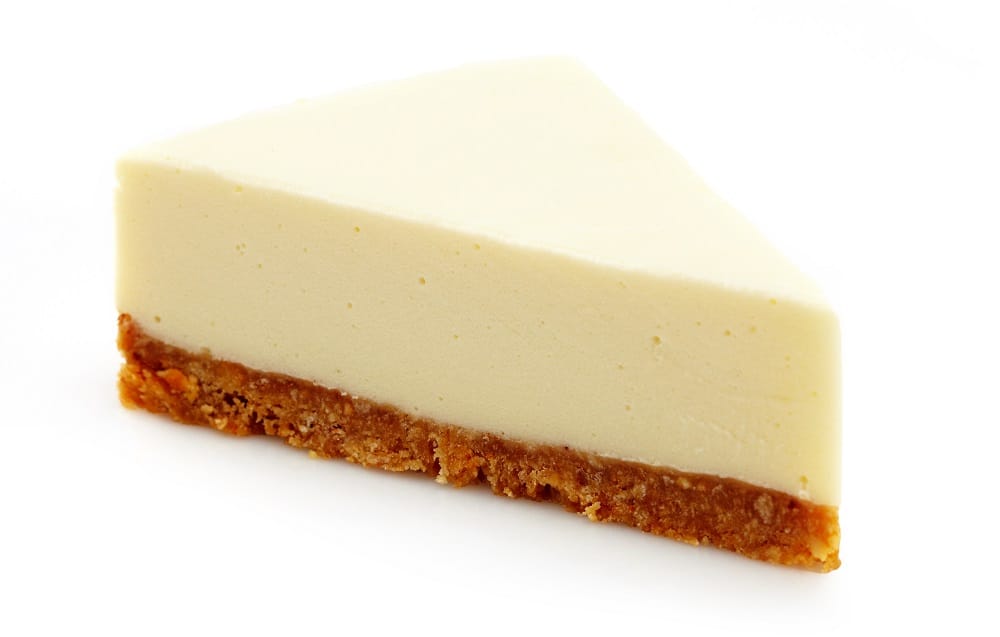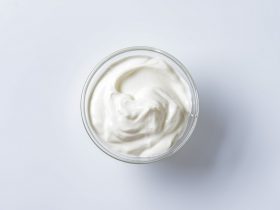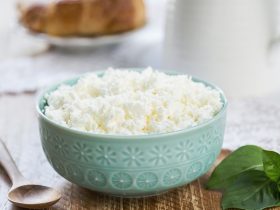Food safety is essential for everybody, but most particularly for pregnant women and their unborn infants. Due to the changes in the immune system of women during pregnancy and the immature immune system of unborn babies, they are both especially in danger for diseases brought about by food borne pathogens (US FDA, 2020).
While most types of cheesecakes are safe to eat during pregnancy, pregnant women should remain vigilant and careful before digging in. Check the ingredients and make sure that all dairy used was pasteurized – cheeses, creams and milk. If eggs are also on the list of ingredients, make sure that the cheesecake is baked, as pregnant women should not eat raw eggs.
Food Borne Illnesses
Listeria Monocytogenes
According to the Centers for Disease Control and Prevention (CDC), 48 million people (or 1 out every 6 individuals) develop food borne illnesses each year. Of these, 128,000 people need hospital care while 3,000 die from their disease. Listeria monocytogenes causes the disease called Listeriosis, which can be passed on to an unborn fetus from a pregnant mother, even if she does not show any sign of infection (US FDA, 2020).
In developed countries, Listeriosis in pregnancy accounts for 20 to 43 percent of the total number of cases. Pregnancy is reported to carry an 18-fold increased risk of developing this disease compared to the general population (Filipello et al., 2017).
L. monocytogenes is a harmful pathogen found in many foods, including deli meats, unpasteurized milk and unpasteurized soft cheeses. Pregnant women are particularly vulnerable to developing Listeriosis because pregnancy affects the immune system’s ability to fight this infection. Unborn infants are also at high risk because their immune system is still developing and they have low chances of resisting any food borne disease (US FDA, 2020).
Listeriosis frequently affects the fetus by transplacental transmission. Overall case fatality rate in infants, including neonatal deaths, is at almost 15 percent. Pregnant mothers with this infection may be asymptomatic (Moran et al., 2018). Because of this, Listeriosis cases in pregnancy may go undiagnosed, particularly when they occur during the first trimester or the infection ends in an early miscarriage (Filipello et al., 2017).
On the other hand, other pregnant women with Listeriosis may develop influenza-like symptoms of fever, malaise, myalgia and headache. However, more serious consequences happen in the fetus or neonate, including abortion, premature delivery, central nervous system infections, septicemia, and death (Moran et al., 2018). Pregnant women with comorbidities are at higher risk, but most cases happen in otherwise healthy pregnant women (Filipello et al., 2017).
In 2017, Filipello et al. documented 610 cases of Listeriosis in Lombardy, Italy within a 10-year period from 2005 to 2014. Of those cases, 40 (or 6.6%) were in pregnant women. There was no maternal fatality recorded, but 11 (or 29.7%) resulted in miscarriage or fetal death immediately after birth.
Contamination with L. monocytogenes often happens in pre-packaged salads, ready to eat foods, soft cheeses, deli meats, unpasteurized dairy products, and with poor food hygiene practices. These bacteria are relatively resistant to different environments, and are able to survive food processing and grow in refrigerated foods (Moran et al., 2018).
Salmonella
Salmonella causes significant food borne human diseases globally. Humans develop Salmonellosis from eating contaminated foods of animal origin, including eggs and poultry meat (Sodagari et al., 2020).
Infection with Salmonella typically presents with fever and gastrointestinal symptoms, including nausea, vomiting, stomach aches and diarrhea. Bacteremia is estimated to happen in about 4% of cases, which can lead to intrauterine sepsis. Therefore, pregnant women should avoid consumption of raw or undercooked eggs (Tam et al., 2010).
Coughlin et al. (2003) presented a case report of a pregnant woman who developed an infection from Salmonella group C. Transplacental transmission occurred and led to an abortion at 16 weeks age of gestation. According to the patient’s history, the infection was most likely contracted from eating undercooked eggs.
In Australia, cheesecake containing eggs was reported to be the cause for an outbreak of Salmonella typhimurium in six individuals in 2003 (Sodagari et al., 2020). The responsible bakery was inspected and was found to have several cracked and fecally contaminated eggs. Their cold set cheesecake was frequently handled with bare hands from the staff, who were unable to demonstrate proper sanitation practices (Fielding et al., 2003).
Types of Cheesecake

New York Style Cheesecake
It is made with cream cheese, heavy cream or sour cream, cornstarch or flour, eggs and sugar. The crust is usually made from graham crackers or cookie crumbs with sugar and melted butter. This type of cheesecake is baked in the oven.
Regular Cheesecake
It is similar to New York style cheesecake. However, it is lighter and flavored with different kinds of ingredients and fillers. It is also baked in an oven.
No-bake Cheesecake
It is made with cream cheese mixed with gelatin as a stabilizer. Some variations use condensed milk, whipped cream or sour cream. It contains no eggs. This type of cheesecake is chilled in the refrigerator to set before eating.
Non-cream Cheese Cheesecake
This type of cheesecake uses ricotta or mascarpone instead of cream cheese. Some versions use cottage cheese or the German cheese called quark (has no rennet).
Japanese Cheesecake
It has no crust and is very light because it uses whipped egg whites. This type of cheesecake also contains cream cheese.
Vegan Cheesecake
It is a non-dairy type of cheesecake, which uses soaked cashews and coconut milk. Some variations are made with soft tofu or with vegan cream cheese substitutes. It can either be baked or chilled before eating.
Are Cheesecakes Safe for Pregnant Women?

Most of the cheesecakes sold in the supermarket are safe for pregnant women to consume. Cream cheese is soft but is not considered under the category of soft cheeses. Instead, cream cheese is a cheese spread that is often pasteurized.
Other dairy products used in cheesecakes, such as sour cream, heavy cream or whipped cream, are also most likely to be pasteurized if they are being sold at a grocery store. However, soft cheeses like brie, queso fresco or camembert may not always be pasteurized, and should be checked for their labels.
The key to eating safe cheesecakes is to find those whose ingredients include only pasteurized cheeses, creams and milk. If eggs have been used, choose only the ones that are baked.
When eating out, pregnant women should ask the server or cook about the ingredients used in the cheesecake before eating it. They should be pasteurized and fully cooked. If these cannot be verified, opt for another desert.
When trying out a homemade cheesecake, again the safest way is for pregnant women to ask about the ingredients. If there are any raw milk products or raw eggs used, avoid eating it.
Tips for Lowering Food Borne Risks During Pregnancy
In Canada, public health authorities recommend the following food safety guidelines during pregnancy (Taylor & Galanis, 2010):
- Avoid consumption of unpasteurized milk and dairy products because of the risk of Listeriosis. Such foods can only be safe to eat when heated to 165oF (or 74oC).
- Avoid consumption of raw and undercooked eggs. Wash hands and any utensils or surfaces that came in contact with raw eggs. Use pasteurized egg products when a recipe calls for raw eggs.
Similarly, according to the US FDA (2020), the foods that are most likely to harbor harmful pathogens include unpasteurized milk, soft cheeses made with raw milk, and raw or undercooked eggs. Therefore, pregnant women are recommended to choose the following lower-risk foods:
- Foods that made use of pasteurized milk in their ingredients
- Pre-made foods like Caesar dressing, cookie dough or eggnog that are made with pasteurized eggs
- Foods with raw or undercooked eggs that made use of pasteurized eggs
- Dishes from restaurants that made use of pasteurized eggs
- Cream cheese
- Soft cheeses that are labeled “made from pasteurized milk”
- Foods cooked to safe temperatures – eggs should be cooked to 160oF until the whites and yolks are firm
- Foods that were refrigerated promptly – eggs should be chilled within 2 hours of cooking to a constant refrigerator temperature of 40oF or below
Final Thoughts
Cheesecakes are safe to consume during pregnancy as long as the ingredients made use of pasteurized dairy products, and baked whenever eggs are used. Pregnant women should never forget to be cautious around this type of food, as consumption of unpasteurized dairy and raw eggs can bring about food borne illnesses that are dangerous for both the mother and the unborn infant. When pregnant women have more dietary concerns, it is best that they talk with their physicians.
References
- Coughlin, L. B., McGuigan, M., Haddad, N. G., & Mannion, P. (2003). Salmonella sepsis and miscarriage. Clinical Microbiology and Infection 9(8), 866-868. https://doi.org/10.1046/j.1469- 0691.2003.00605.x
- Fielding, J., Snell, P., Milazzo, A., Del Fabbro, L., & Raupach, J. (2003). An outbreak of Salmonella typhimurium phage type 4 linked to cold set cheesecake. Communicable Diseases Intelligence Quarterly Report 27(4). 513-514. http://www6.health.gov.au/internet/main/publishing.nsf/Content/cda-pubs-cdi-2003-cdi2704- htm-cdi2704m.htm
- Filipello, V., Amato, E., Gori, M., Huedo, P., Ciceri, G., Lomonaco, S., & Pontello, M. (2017). Epidemiology and molecular typing of pregnancy-associated listeriosis cases in Lombardy, Italy, over a 10-year period (2005-2014). Infectious Diseases in Obstetrics and Gynecology 2017, 6479121. doi: 10.1155/2017/6479121
- Moran, L. J., Verwiel, Y., Khomami, M., Roseboom, T. J., & Painter, R. C. (2018). Nutrition and listeriosis during pregnancy: A systematic review. Journal of Nutritional Science 7, e25. doi: 10.1017/jns.2018.16
- Sodagari, H. R., Wang, P., Robertson, I., Habib, I., & Sahibzada, S. (2020). Non-typhoidal Salmonella at the human-food-of-animal-origin interface in Australia. Animals 10(7), 1192. doi: 10.3390/ani10071192
- Tam, C., Erebara, A., & Einarson, A. (2010). Food-borne illnesses during pregnancy. Canadian Family Physician 56(4), 341-343. https://www.ncbi.nlm.nih.gov/pmc/articles/PMC2860824/
- Taylor, M., & Galanis, E. (2010). Food safety during pregnancy. Canadian Family Physician 56(8), 750-751. https://www.ncbi.nlm.nih.gov/pmc/articles/PMC2920771/
- U.S. Food & Drug Administration. (2020). Food safety: For pregnant women, their unborn babies, and children under five. Retrieved from https://www.fda.gov/media/83740/download




